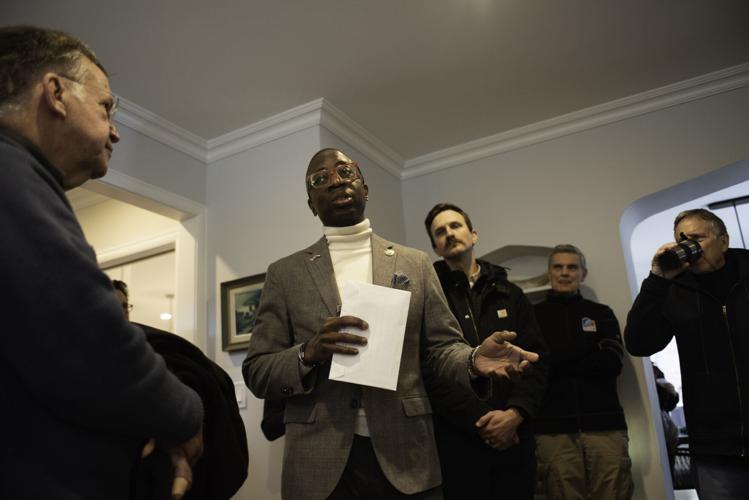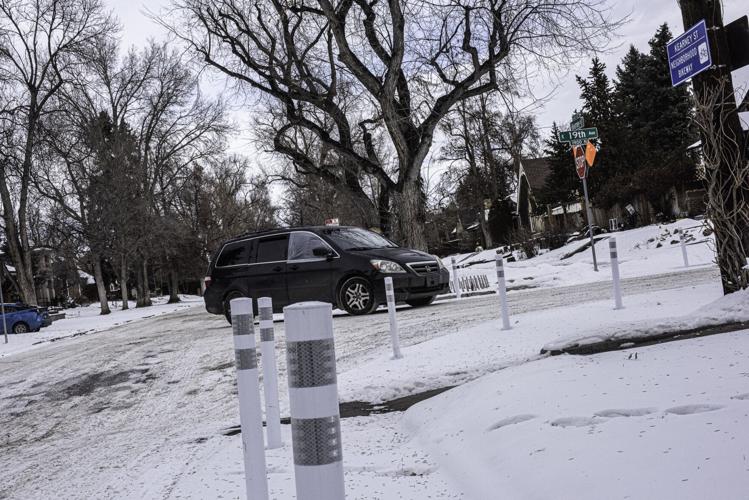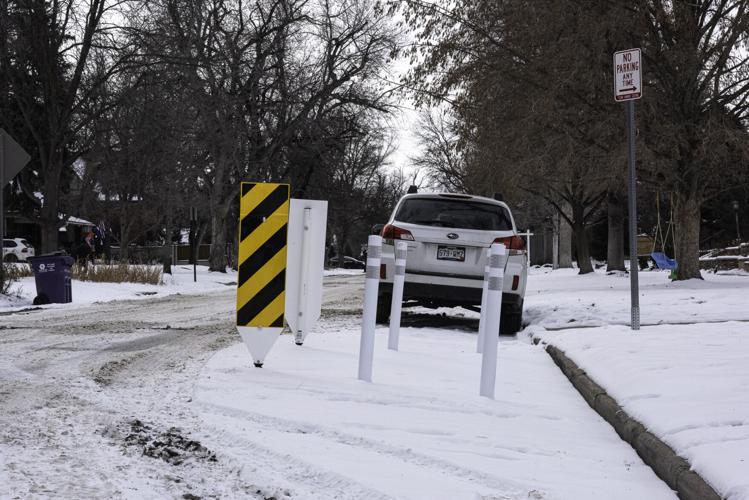Denver transportation officials agree to scale back neighborhood bikeway measures
A group of Denver residents seeking to slow the city’s roll on a Park Hill neighborhood bikeway project got their wish Thursday morning.
District 9 Councilmember Darrell Watson and officials from the city’s Department of Transportation and Infrastructure (DOTI) at a neighborhood meeting returned a compromise plan that would remove many of the “unsightly” bollards, but still prioritize the safety of cyclists and pedestrians.
The compromise replaces many of the flex posts and bollards of concern to neighbors east of City Park and north of Colfax Boulevard with speed cushions that would act as traffic calming treatments, but still provide an element of safety to pedestrians and bicyclists.
With more than 70 bollards along Kearney Street, residents complained at a previous neighborhood meeting with city officials about the excessive number and the highly reflective tape and paint that impacted curb appeal and illuminated living rooms at night as cars passed.
Other concerns centered around “pinch points” designed to slow traffic, but according to some residents, created a dangerous “game of chicken” with motorists as cyclists are forced off the bikeway and back into traffic.
“We heard you guys loud and clear,” DOTI Engineer Supervisor Brett Boncore told residents, thanking them for their feedback.
So, what’s changed from the initial proposal?
Specifically, the changes outlined by Boncore include replacing the flex posts and bollards at pinch points with speed cushions.
“If you’re not familiar with that term, some people call them speed humps,” Boncore said. “We call them speed cushions because they are a little different.”
Basically a “big speed hump,” Boncore said the difference is the wide wheel cutouts — or gaps — built into the middle that permit emergency response vehicles to pass without reducing speed.
Bicyclists may also pass over the speed cushion without significantly disrupting their movement.
According to a memo shared by the Crestmoor Homeowners Association, the speed cushions will be installed at 5 to 6 locations on Kearney Street between 6th and Southmoor Drive and another 5 to 6 locations along Southmoor Drive/South Kearney Street from East Bayaud Avenue to Kearney Street.
Boncore added that DOTI will also be reducing the number of bollards and flex posts by 75% from the initially proposed.
“We’re not completely taking them away,” he said. “There are some areas where we feel like they are really needed, especially those intersections right around schools and parks and commercial districts.”
The remaining bollards will be strategically placed at the intersections near the Crestmoor Community Pool at Kearney Lane and Southmoor Drive, as well as South Kearney Street and East Bayaud Avenue.
No bollards or flex posts will be installed at any intersection on Kearney Street, including at First Street and at Southmoor Drive, according to the HOA memo.
Signage will also be minimized, Boncore said.
No formal timeline has been established, but Boncore estimated residents may see some movement within 2 to 3 months.
But what do bicyclists and biking advocates think?
Jill Locantore, executive director of Denver Streets Partnership — a group that advocates for biking, walking, biking transit, and safe streets for everyone — said the city’s compromise is a win-win.
“We are like the residents of the neighborhood, pleased with the idea of using more speed cushions as a tool for reducing speed and volumes of traffic because we’ve seen that be effective in other communities right here in the Denver metro area,” Locantore said. “It’s essentially swapping out one treatment for another, but with the same intended outcome.”
Speed cushions are relatively new to the Denver area, but DOTI Communications Director Nancy Kuhn said she is excited about having them in the city’s toolbox.
Watson, an active cyclist, reiterated the residents’ efforts and impact on how future bikeways may be designed as the city builds a larger network.
“It’s not only impacting this bikeway; it will have impact across the city,” Watson said. “And so the work that you all have done is not singular — just to this — it is a change in the city, and how DOTI is going to execute on bikeways and other traffic calming throughout the city.”







